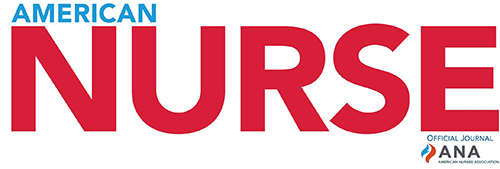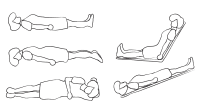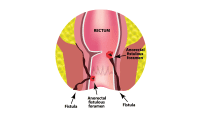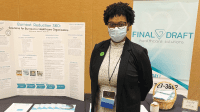A quick response ensures good outcome.
Takeaways:
- Supraventricular tachycardia is a broad term describing a fast regular rhythm originating above the atrioventricular (AV) node.
- A narrow complex and regular rhythm would suggest AV nodal reentrant tachycardia or AV reciprocating tachycardia. An irregular rhythm would more likely indicate atrial fibrillation or atrial flutter.
- Maneuvers that increase vagal tone can help reduce the heart rate, but when that’s unsuccessful, adenosine is typically administered.
During your rounds as a rapid response nurse, nurse Kyle Austin* tells you he’s concerned about Anne Jones, age 81, who was admitted to the medical-surgical unit for fever and pneumonia. Her medical history includes hypertension and coronary artery disease. She’s restless, short of breath, and tachycardic.
*Names are fictitious.
History and assessment
You assess Ms. Jones with Kyle. The patient’s vital signs are temperature 100.4° F (38° C), HR 164 bpm, RR 32 breaths per minute, BP 108/74 mmHg, and Spo2 91% on 3 L/minute of oxygen. Ms. Jones is anxious and dizzy and her heart is racing. She denies chest pain.
Taking action
As you place Ms. Jones on the ECG monitor, Kyle activates the rapid response team (RRT). The patient is in narrow-complex supraventricular tachycardia (SVT), with a regular rhythm at a rate of 176 bpm. When additional members of the RRT arrive, Kyle shares his assessment findings: Ms. Jones was admitted with pneumonia, the provider ordered I.V. antibiotics, and the patient is hypoxic. You increase the flow of oxygen to 6 L/minute to obtain an Spo2 > 96%. Anticipating that the provider may order adenosine, you connect the pacing pads to the monitor, obtain a 12-lead ECG, verify patent I.V. access, and instruct Kyle to prepare a bag of normal saline (NS).
The provider attempts vagal maneuvers, first by having the patient bear down as if she were having a bowel movement and then having her blow into an occluded straw for 15 seconds. With no result, the provider orders 6 mg of adenosine I.V. followed by a 20 mL NS flush. You explain to Ms. Jones that adenosine may make her feel as if she’s passing out, but that the feeling won’t last long. When the first dose of adenosine has no effect, you administer a second dose of 12 mg. After a brief run of sinus bradycardia, Ms. Jones goes into normal sinus rhythm at 84 bpm. Because tachycardia is a symptom of an underlying cause such as dehydration, fever, pain, bleeding, hypoxia, or electrolyte imbalances, the provider orders a complete blood count, troponin test, and a basic metabolic panel.
Ms. Jones reports that her dizziness has subsided. Her vital signs are HR 86 bpm, BP 112/68 mmHg, RR 22 breaths/minute, Spo2 97% on 6 L/minute of oxygen via nasal cannula. You transfer Ms. Jones to the medical telemetry unit.
Outcome
Ms. Jones continues her pneumonia treatment and responds to the I.V. antibiotics. Follow-up chest X-ray shows that her pneumonia is improving and her oxygen is weaned to room air. Ms. Jones is discharged 2 days later.
Education and follow-up
SVT is a broad term describing a fast regular rhythm originating above the atrioventricular (AV) node. The narrow complex and regular rhythm of Ms. Jones’ SVT suggests AV nodal reentrant tachycardia or AV reciprocating tachycardia; an irregular rhythm would more likely indicate atrial fibrillation or atrial flutter. Maneuvers that increase vagal tone can help reduce the heart rate, but when that’s unsuccessful, adenosine is typically administered. With a half-life of < 10 seconds, adenosine slows conduction in the AV nodal pathways and interrupts reentry pathways, restoring the heart to its normal rhythm. It’s not effective in atrial fibrillation or flutter, but it will slow the rate, aiding in diagnosis.
Pneumonia may lead to hypoxia, causing cardiac arrhythmias, such as SVT. You commend Kyle for recognizing the change in Ms. Jones’ clinical status.
The authors are rapid response nurses at Thomas Jefferson University Hospital in Philadelphia, Pennsylvania.
References
Appelboam A, Reuben A, Mann C, Lobban T. Randomised evaluation of modified valsalva effectiveness in re-entrant tachycardias (REVERT) study. BMJ Open. 2014;4(3):e004525.
Brkić A, Bećirović E, Brkić T, et al. Supraventricular tachycardia. Cardiol Croat. 2018;13(11-12):322.
Ekinci S, Akgül G, Arş E, Aydin A, Musalar E, Aktaş C. Valsalva maneuver techniques for supraventricular tachycardias: Which and how? Hong Kong J Emerg Med. 2017;24(6):298-302.
Page RL, Joglar JA, Caldwell MA, et al. 2015 ACC/AHA/HRS guideline for management of adult patients with supraventricular tachycardia. A report of the American College of Cardiology/American Heart Association Task Force on clinical practice guidelines and the Heart Rhythm Society. Circulation. 2016;133(14):e471-505.
Patti L, Ashurst JV. Supraventricular tachycardia (SVT). StatPearls. December 1, 2019. ncbi.nlm.nih.gov/books/NBK441972/
Singh S, McKintosh R. Adenosine. StatPearls. December 4, 2019. ncbi.nlm.nih.gov/books/NBK519049/


















